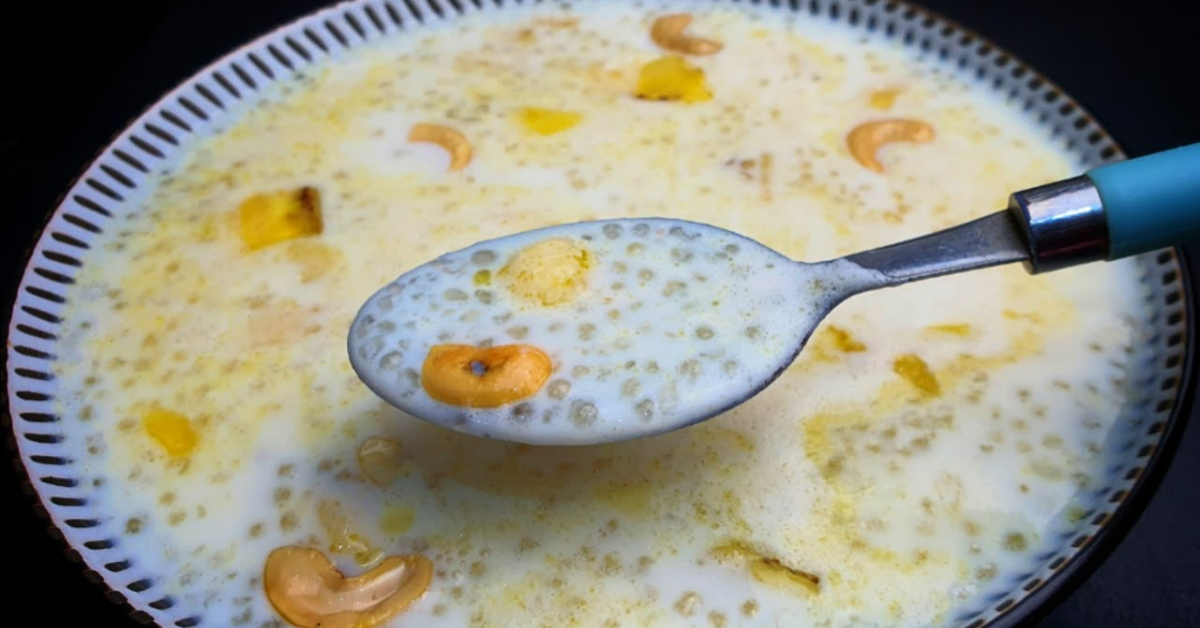
പാലും നേന്ത്രപ്പഴവും കൊണ്ട് അസാധ്യ രുചിയിൽ പായസം; വിരുന്നുക്കാരെ ഞെട്ടിക്കാൻ ഇതുമതി; ഒരിക്കലെങ്കിലും ഇതൊന്ന് തയ്യാറാക്കി നോക്കൂ..!! | Tasty Chowari Payasam Recipe
Tasty Chowari Payasam Recipe : അതിഥികൾ പെട്ടെന്ന് വീട്ടിലേക്ക് കയറി വരുമ്പോൾ എന്ത് ഉണ്ടാക്കിക്കൊടുക്കണം എന്ന് ചിന്തിച്ച് തലപുകയ്ക്കുന്നവരായിരിക്കും മിക്ക വീട്ടമ്മമാരും. പലപ്പോഴും വീട്ടിൽ സാധനങ്ങൾ ഉണ്ടെങ്കിലും അത് ഉപയോഗിച്ച് എന്ത് ചെയ്യണം എന്ന് അറിയാതെ പകച്ചുനിൽക്കുന്ന അവസ്ഥയിൽ തീർച്ചയായും തയ്യാറാക്കി നോക്കാവുന്ന ഒരു കിടിലൻ പാൽ വാഴക്കയുടെ റെസിപ്പി വിശദമായി മനസ്സിലാക്കാം.
ആദ്യം തന്നെ ഒരു പാൻ അടുപ്പത്ത് വെച്ച് അതിലേക്ക് ഒരു ടേബിൾ സ്പൂൺ അളവിൽ നെയ്യ് ഒഴിച്ചു കൊടുക്കുക. നെയ്യ് ചൂടായി തുടങ്ങുമ്പോൾ അതിലേക്ക് ചെറുതായി അരിഞ്ഞുവെച്ച നേന്ത്രപ്പഴം ഇട്ട് നല്ലതുപോലെ വഴറ്റിയെടുക്കുക. ശേഷം മറ്റൊരു പാത്രത്തിൽ മുക്കാൽ ഭാഗത്തോളം വെള്ളം തിളപ്പിക്കാനായി വയ്ക്കാം. ഈയൊരു വിഭവത്തിലേക്ക് ആവശ്യമായ ചൊവ്വരി വേവിച്ചെടുക്കുന്നതിന് വേണ്ടിയാണ് ഇത്തരത്തിൽ വെള്ളം
തിളപ്പിക്കുന്നത്. ചൊവ്വരി നന്നായി കഴുകി വൃത്തിയാക്കി എടുത്ത ശേഷം തിളച്ച വെള്ളത്തിലേക്ക് ഇട്ടുകൊടുക്കുക. ഇത് കുറച്ചുനേരം വെള്ളത്തിൽ കിടക്കുമ്പോൾ തന്നെ വെന്ത് കിട്ടുന്നതാണ്. ഈയൊരു സമയം കൊണ്ട് പഴം വറുക്കാനായി എടുത്ത പാനിലേക്ക് രണ്ട് കപ്പ് പാൽ ഒഴിച്ചു കൊടുക്കുക. പാൽ നല്ലതുപോലെ തിളച്ചു തുടങ്ങുമ്പോൾ അതിലേക്ക് പഴത്തിന്റെ മധുരം നോക്കിയ ശേഷം ആവശ്യത്തിന് ഉള്ള പഞ്ചസാര ചേർത്തു കൊടുക്കാവുന്നതാണ്. പാലും പഞ്ചസാരയും നന്നായി കുറുകി സെറ്റായി തുടങ്ങുമ്പോൾ
അതിലേക്ക് വേവിച്ചുവച്ച ചൊവ്വരി കൂടി ചേർത്തു കൊടുക്കണം. അവസാനമായി നെയ്യിൽ വറുത്തുവെച്ച പഴം കൂടി പാലിലേക്ക് ചേർത്തു കൊടുക്കണം. എല്ലാ ചേരുവകളും പാലിൽ കിടന്ന് നല്ലതുപോലെ സെറ്റായി തുടങ്ങുമ്പോൾ സ്റ്റവ് ഓഫ് ചെയ്യാം. സെർവ് ചെയ്യുന്നതിന് മുൻപായി കുറച്ച് അണ്ടിപ്പരിപ്പും വറുത്തു വെച്ച പഴത്തിൽ നിന്ന് കുറച്ചു എടുത്ത് അതും മുകളിലായി വിതറി കൊടുക്കാവുന്നതാണ്. ഇപ്പോൾ നല്ല രുചികരമായ പാൽ വാഴക്ക റെഡിയായി കഴിഞ്ഞു. കൂടുതൽ വിശദമായി മനസ്സിലാക്കാൻ വീഡിയോ കാണാവുന്നതാണ്. Tasty Chowari Payasam Recipe credit : Mums Daily
🌸 Chowari Payasam Recipe
🧺 Ingredients
(Serves 4–5 people)
- Chowari / Sabudana (sago) – ½ cup
- Jaggery – ¾ to 1 cup (adjust to taste)
- Thick Coconut Milk – 1 cup
- Thin Coconut Milk – 2 cups
- Water – 2 cups (for cooking sago)
- Ghee – 2 tbsp
- Cashew nuts – 10–12
- Raisins – 10–12
- Cardamom powder – ½ tsp
- Coconut bits (optional) – 2 tbsp (for extra flavor)
- Salt – a small pinch (to balance sweetness)
🫕 Preparation Steps
1. Cook the Chowari (Sago)
- Wash the sago 2–3 times and soak it in water for about 30 minutes.
- Drain and cook it in 2 cups of boiling water until it becomes transparent and soft.
- Stir occasionally so it doesn’t stick. Once cooked, strain and set aside.
2. Melt the Jaggery
- In a small pan, add ½ cup water and grated jaggery.
- Heat until the jaggery melts completely. Strain to remove impurities and keep aside.
3. Combine Sago & Jaggery
- In a thick-bottomed pan, mix the cooked sago and filtered jaggery syrup.
- Simmer for 5–7 minutes until it thickens slightly and the flavors blend.
4. Add Coconut Milk
- Pour in the thin coconut milk and cook on low flame for another 5 minutes.
- Once the mixture starts to thicken, add the thick coconut milk and cardamom powder.
- Stir well and heat gently — do not boil after adding thick coconut milk, as it may curdle.
- Add a pinch of salt to balance sweetness.
5. Fry Nuts & Garnish
- Heat ghee in a small pan. Fry cashews until golden, then add raisins (and coconut bits if using) and fry until puffed.
- Pour this over the payasam and mix gently.
🍶 Serving Suggestion
- Serve warm or slightly chilled.
- It tastes divine as a dessert after a Kerala meal or festive sadhya!
💡 Tips
- If you prefer a richer texture, add a few tablespoons of condensed milk along with the jaggery syrup.
- Adjust the consistency with warm water or thin coconut milk before serving, as payasam tends to thicken on cooling.
- Roasted coconut bits add an authentic Kerala touch and crunch.

Comments are closed.